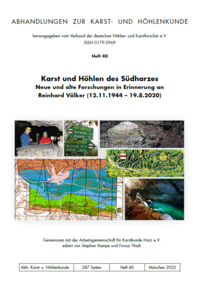Protected areas and geoparks
Geschützter Gipskarst im Südharz akut bedroht
Protected Areas of the Gypsum Karst Landscape in the Southern Harz under Threat
The gypsum karst landscape of the southern Harz is a unique natural area that extends over around 100 km and includes parts of the German federal states of Lower Saxony, Thuringia and Saxony-Anhalt. Within this region there are 16 Natura 2000 areas, but also many quarries, which have already destroyed large parts of the landscape.
Only in the federal state of Saxony-Anhalt is the gypsum karst still completely intact. This area has therefore been designated as the ‘Südharz Karst Landscape Biosphere Reserve’ by the German federal state Saxony-Anhalt – so far it is the only biosphere reserve in the world in a sulfate karst!
Despite this outstanding position, central parts of this area could soon be destroyed forever. Citing the coalition agreement of the state government of Saxony-Anhalt, the responsible district of Mansfeld-Südharz plans to approve an application by the gypsum company Knauf to drill eight exploratory boreholes to explore the local gypsum deposits in the middle of the Natura 2000 area ‘Buntsandstein- und Gipskarstlandschaft near Questenberg in the southern Harz region (EU code DE 4432-301, national code FFH0101) . The government of Saxony-Anhalt has reportedly indicated that it would accept quarries if gypsum mining were to be carried out here.
background documents
FFH-Erheblichkeitseinschätzung und Verträglichkeitsprüfung FFH-Gebiet „Buntsandstein- und Gipskarstlandschaft bei Questenberg im Südharz“
Fachtechnisches Gutachten „Hydrogeologische Bewertung von Gebieten zur Rohstofferkundung im Landkreis Mansfeld Südharz“
VdHK-Resolution
English version
If you would like to co-sign the resolution, please send a short message with your name and affiliation to Bärbel Vogel.
Support
Prof. John Gunn, Chair IUCN / WCPA GSG Caves and Karst Working Group
Prof. Dr. Nadja Zupan Hajna, President International Union of Speleology
Jean-Pierre Bartholeyns, President Karst and Cave Protection Commission UIS
Anne-Kathrin Godec and Ivo LučićKrasopis, Co-Presidents Association for Research, Promotion and Protection of Karst Landscapes
Jean-Claude Thies, President European Cave Protection Commission
Guest-Prof. Dr. F. Wolfgang Eder, Former UNESCO Director "Division of Earth Sciences"
Prof. Paolo Forti, Director of the Italian Institute of Speleology
Prof. Jo De Waele, University of Bologna, Department of Biological, Geological and Environmental Sciences
Dr. George Veni, UIS Past-President, 2017-2022
Damir Janton, Head of the Speleological Committee of Croatian Mountaineering Association
Sergio Orsini, President of the Italian Speleological Society SSI
Jan Urban, President of the Speleological Section - Polish Copernicus Society of Naturalists
Barbara Wielander, Präsidentin des Verbandes Österreichischer Höhlenforschung
Oier Gorosabel Larranaga, ADES Espeleologia Elkartea
Christian Lüthi, Schweizerische Gesellschaft für Höhlenforschung - Kommission für Höhlen- und Karstschutz
VdHK-YouTube
international
Programm: Online Seminar on the Protection of Gypsum Karst
YouTube link: Online Seminar on the Protection of Gypsum Karst
national
Programm: Festsymposium zu Natura 2000 und Naturschutz im Gipskarst
YouTube link Part 1: Festsymposium zu Natura 2000 und Naturschutz im Gipskarst
YouTube link Part 2: Festsymposium zu Natura 2000 und Naturschutz im Gipskarst
YouTube link: Gesetz zur Rettung der Natur, Jutta Paulus MEP
VdHK-Wintervortragsreihe 2022
Der Gipskarst im Südharz - eine international einmalige Landschaft in Gefahr
VdHK-Wintervortragsreihe 2023
Lost Places - Die Liste der verschwundenen Höhlen

Prof. Dr. Stephan Kempe: "Gips- und Anhydritkarst in Deutschland"
VdHK-Wintervortragsreihe
Am 10.12.2024 um 20:00 Uhr startet die VdHK-Wintervortragsreihe mit Prof. Dr. Stephan Kempe,
der zu "Gips- und Anhydritkarst in Deutschland" referieren wird.
Der Vortrag ist dann jeder Zeit im VdHK-YouTube Kanal abrufbar.
Weitere Infos zum Vortrag https://www.vdhk.de/.../pdf/news/2024/Gips_in_D_St_Kempe.pdf
VdHK-YouTube Kanal https://www.youtube.com/watch?v=FwUomix27tI
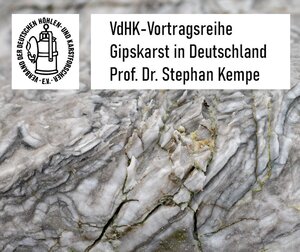
Pressemitteilungen
VdHK zur Antwort der EU-Kommission zu Probebohrungen in Schutzgebieten Sachsen-Anhalts vom 14.01.25
FotoGipskarst aus dem Südharz - Natur, Landschaft und Heimat - oder nur Rohstoff? Foto: Peter Hofmann
VdHK Stellungnahme zum Landesentwicklungsplan Sachsen-Anhalt vom April 2024
BUND Sachsen-Anhalt stellt Eilantrag gegen Probebohrungen vom 13.12. 2024
VdHK Manuela Ripa MEP stellt Anfrage an die Europäische Kommission vom 28.11. 2024
VdHK DNR-Mitgliederversammlung votiert geschlossen für den Schutz der Karstlandschaft im Südharz 17.10. 2024
VdHK Offfener Brief an Knauf vom 7. 10. 2024
VdHK Unterstützer aus aller Welt vom 4. 10. 2024
VdHK Offener Brief an Ministerpräsident Haseloff vom 26. 9. 2024
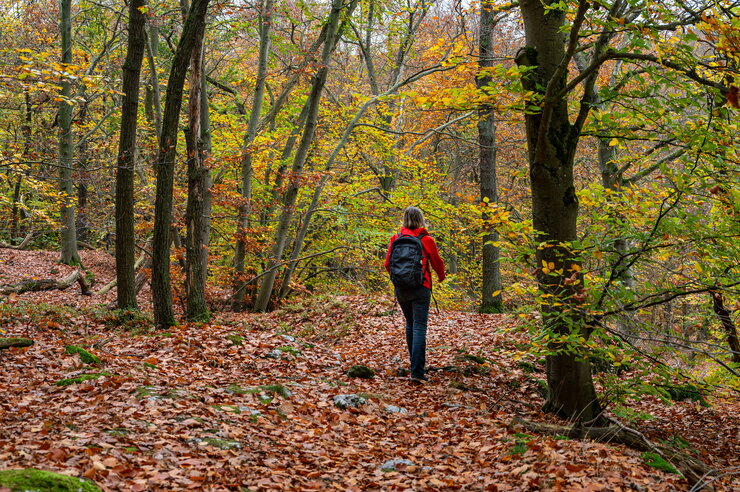
VdHK-Resolution zum Schutz der Karstlandschaft im Südharz
VdHK-Resolution zum Schutz der Karstlandschaft im Südharz
English version
Wenn Sie die Resolution mitzeichnen wollen, schicken Sie bitte eine kurze Nachricht mit Name und Funktion
an Bärbel Vogel.
Unterstützer der Resolution zum Schutz der Karstlandschaft Südharz
- Christine Reimann, Mitglied im Kreistag Mansfeld-Südharz, Sprecherin LAG "Ländliche Räume"
- Doris Seibt, NABU Vorsitzende des Landkreises Mansfeld-Südharz
- Wolfgang Aldag, Mitglied im Landtag von Sachsen-Anhalt und NABU-Mitglied Halle-Saalekreis
- Mitgliderversammlung des Deutschen Naturschutzrings DNR
- Arbeitskreis Hallesche Auenwälder zu Halle (Saale) e.V. (AHA)
- Reiner Kretschmann, Mitglied im Kreistrag Mansfeld-Südharz
- Nico Herning, Südharz
- Landesverband des Naturfreunde Sachsen-Anhalt e.V.
- Dagmar Schreiber, Edersleben, BUND-Kreisgruppe Mansfeld-Südharz
- Sabine Leisten, Sangerhausen, Sprecherin BUND Kreisgruppe Mansfeld-Südharz
- Winfried Leisten, Sangerhausen, BUND Kreisgruppe Mansfeld-Südharz
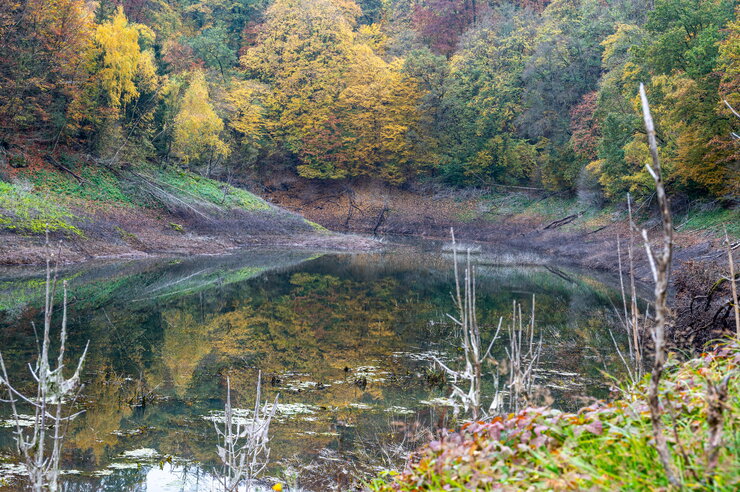
Unterstützerschreiben für den Erhalt des Gipskarstlandschaft Südharz
Unterstützerschreiben / Support
Prof. John Gunn, Chair IUCN / WCPA GSG Caves and Karst Working Group
Prof. Dr. Nadja Zupan Hajna, President International Union of Speleology UIS
Jean-Pierre Bartholeyns, President Karst and Cave Protection Commission UIS
Jean-Claude Thies, President European Cave Protection Commission
Anne-Kathrin Godec and Ivo LučićKrasopis, Co-Presidents Association for Research, Promotion and Protection of Karst Landscapes
Guest-Prof. Dr. F. Wolfgang Eder, Former UNESCO Director "Division of Earth Sciences"
Prof. Paolo Forti, Director of the Italian Institute of Speleology
Prof. Jo De Waele, University of Bologna, Department of Biological, Geological and Environmental Sciences
Dr. George Veni, UIS Past-President, 2017-2022
Damir Janton, Head of the Speleological Committee of Croatian Mountaineering Association
Sergio Orsini, President of the Italian Speleological Society SSI
Jan Urban, President of the Speleological Section - Polish Copernicus Society of Naturalists
Barbara Wielander, Präsidentin des Verbandes Österreichischer Höhlenforschung
Oier Gorosabel Larranaga, ADES Espeleologia Elkartea
Christian Lüthi, Schweizerische Gesellschaft für Höhlenforschung - Kommission für Höhlen- und Karstschutz
Prof. José-Maria Calaforra, Universität Almeria, Direktor der Forschungsgruppe für Wasserressourcen und Umweltgeologie
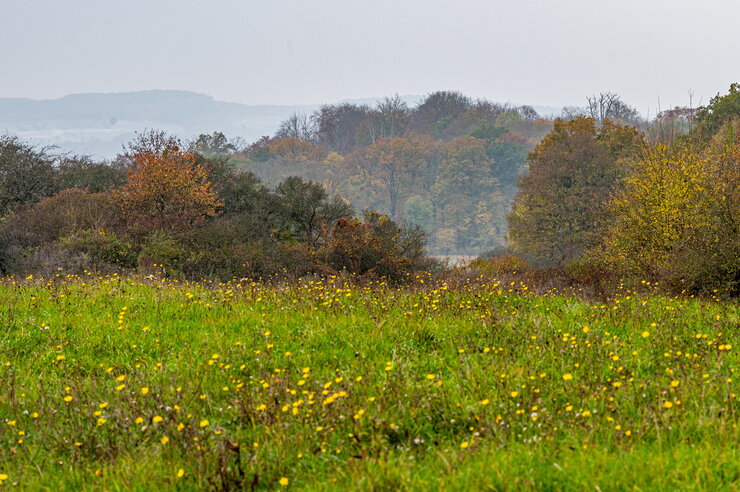
Stellungnahmen und Dokumente
Stellungnahmen
Stellungnahme VdHK
Stellungnahme Prof. Dr. Stephan Kempe
Stellungnahme BUND
Unterlagen / background documents
FFH-Erheblichkeitseinschätzung und Verträglichkeitsprüfung FFH-Gebiet „Buntsandstein- und Gipskarstlandschaft bei Questenberg im Südharz“
Fachtechnisches Gutachten „Hydrogeologische Bewertung von Gebieten zur Rohstofferkundung im Landkreis Mansfeld Südharz“
VdHK-Stellungnahme zum Entwruf des Landesentwicklungsplans Sachsen-Anhalt April 2024
Aktuelle Entwicklung
Kreistagssitzung Landkreis Mansfeld-Südharz in YouTube
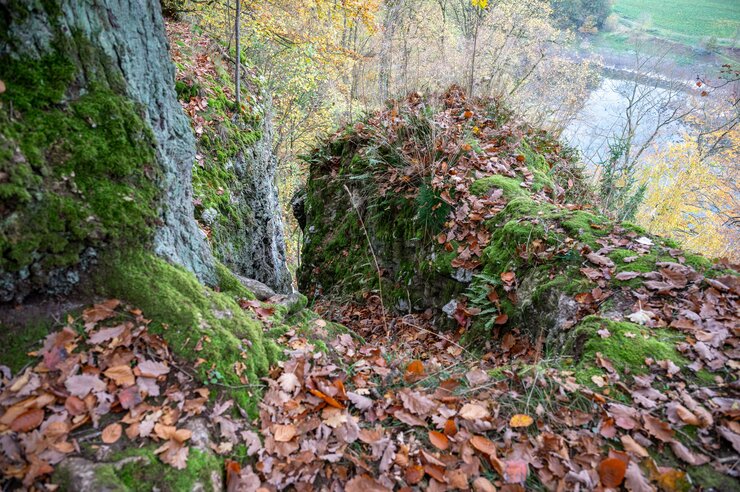
Wandern durch bedrohten Gipskarst
Wanderführer durch den Gipskarst des Biosphärenreservates Karstlandschaft Südharz
Abhandlungen zur Karst- und Höhlenkunde Heft 40
Karst und Höhlen des Südharzes
247 Seiten, als Buch erhältlich für 20,- € über http://argekh.net/mainnav/startseite.html
Weitere Infos auch auf www.karstwanderweg.de
Festsymposium Natura 2000 und Naturschutz im Gipskarst
Walkenried 2023
international
Programm: Online Seminar on the Protection of Gypsum Karst
YouTube link: Online Seminar on the Protection of Gypsum Karst
national
Programm: Festsymposium zu Natura 2000 und Naturschutz im Gipskarst
YouTube link Teil 1: Festsymposium zu Natura 2000 und Naturschutz im Gipskarst
YouTube link Teil 2: Festsymposium zu Natura 2000 und Naturschutz im Gipskarst
YouTube link: Gesetz zur Rettung der Natur, Jutta Paulus MEP
VdHK-Wintervortragsreihe
2022 Der Gipskarst im Südharz - eine international einmalige Landschaft in Gefahr
2023 Lost Places - Die Liste der verschwundenen Höhlen
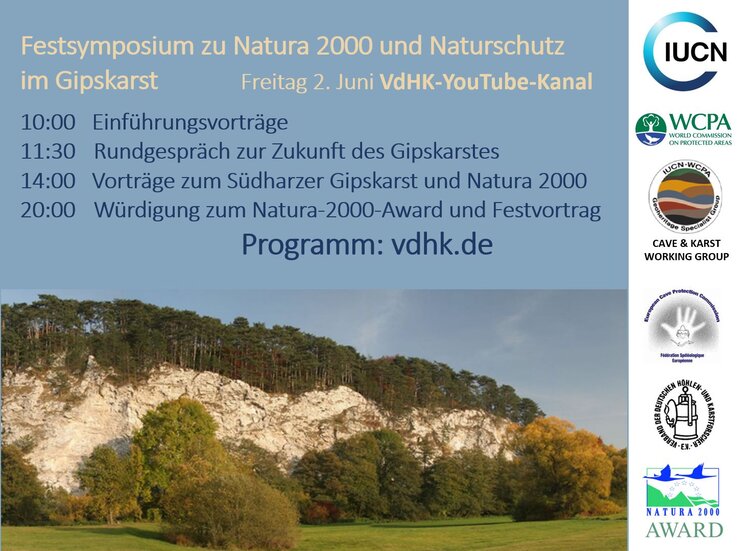
Gypsum karst in Harz threatened
On the edge of the Harz mountains lies the most important gypsum karst area in Europe. The Southern Harz Gypsum Karst Landscape stretches across Lower Saxony, Thuringia and Saxony-Anhalt. Due to the diversity of different habitats, it is an important refuge for many endangered plant and animal species. Forests rich in orchids and damp gorges alternate with small water bodies and bogs, rare rocky outcrops, dry grasslands, orchard meadows and cave biotopes. A jewel of nature conservation - created tens of thousands of years ago and unique.
But this and other gypsum karst areas are threatened by mining!
Environmental associations in Germany are calling for a medium-term phase-out of natural gypsum mining in Germany by 2045 and no approval of new mining areas. In a joint position paper, the GRÜNE LIGA, Naturschutzbund (NABU), the Bund für Umwelt und Naturschutz Deutschland (BUND), as well as the German Speleological Federation (VdHK) and the Architects for Future (A4F) initiative call for a fundamental rethink in the construction sector.
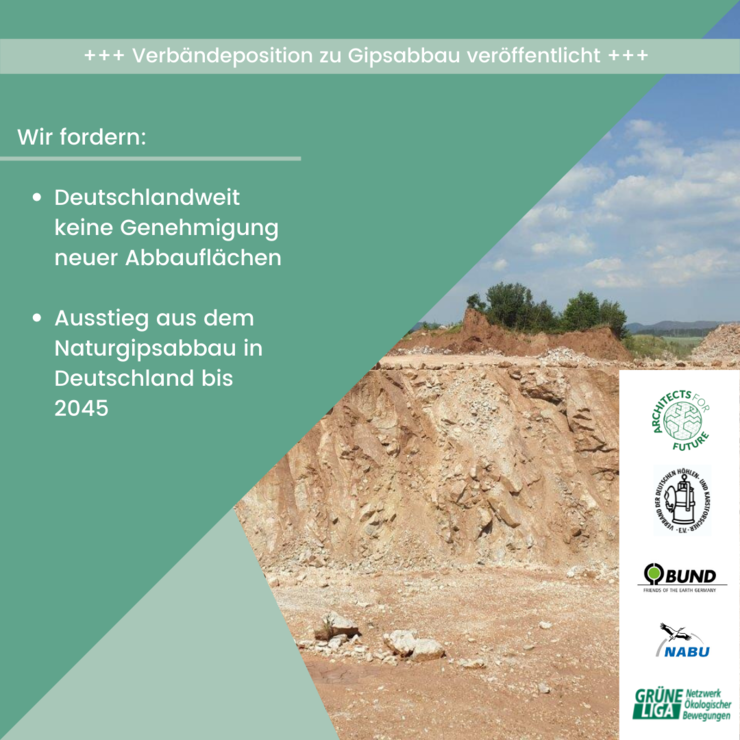
Literaturverzeichnis
Südharz bei Karstwanderweg.de
Protected areas of rare gypsum karst in Germany under threat - UIS Bulletin Dez. 2024
